Jonathan Yeo, Self Portrait³, NFT
Jonathan Yeo: Portrait Painting in 3-Dimensions
Jonathan Yeo’s debut NFT brings together themes that have defined his practice: portraiture, the meeting of 2D and 3D and storytelling.
Jonathan Yeo (b. 1970) is one of the world’s leading portraitists and has exhibited widely in both the UK and abroad. His sitters include such diverse figures as Sir David Attenborough, Malala Yousafzai, Damien Hirst, Grayson Perry, Idris Elba, Nicole Kidman, Baroness Lawrence, Tony Blair and The Duke of Edinburgh. The artist has been working with digital technologies for half a decade and his debut NFT brings together some of the themes that have defined his exploration and practice to date: portraiture, the meeting of 2D and 3D and storytelling.
Jonathan Yeo created his inaugural NFT work, minted on April 5 in exclusive partnership with Verisart and SuperRare as part of 10×10: 10 inaugural NFTs by 10 major contemporary artists over 10 weeks. Bidding is open until 1pm EDT April 8. The winner of the auction will receive an exclusive physical print, signed by the artist, showing a unique still from the making of the NFT work.
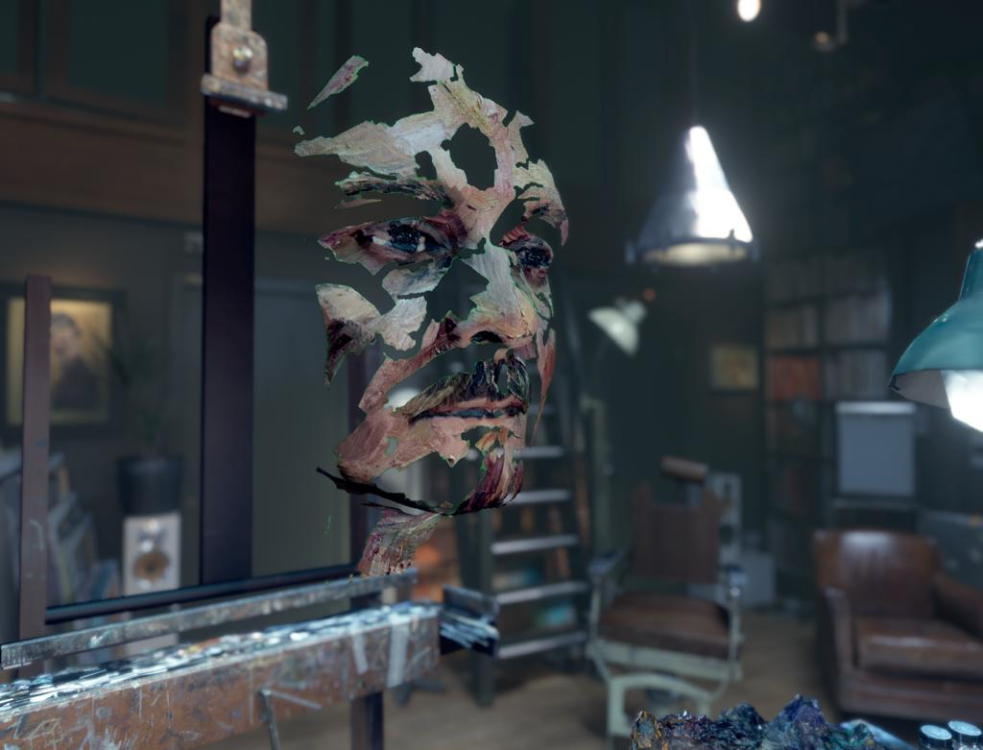
Portraiture: Evolving a traditional medium
In Jonathan Yeo’s debut NFT, Self Portrait³, the viewer is taken on a journey around the artist’s studio, where they get to witness an imaginary artwork, a self-portrait of the artist, forming on a canvas sitting on an easel. The visual story is told both as a movement in space, conveyed by the shifting camera angles, and time, as the viewer sees the work appear in front of their eyes.
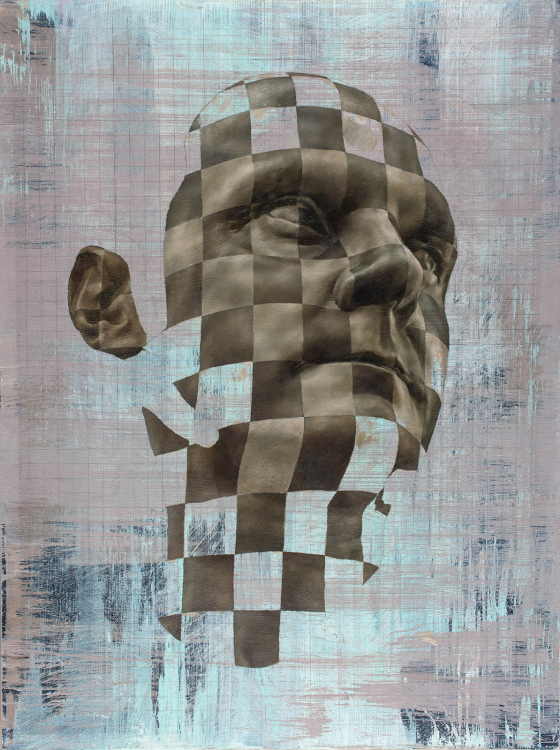
While portraiture is frequently viewed as a traditional genre, Yeo has not shied away from experimenting and embracing technology in his practice. In early 2016, the artist was asked by Google to help develop their groundbreaking drawing software for virtual reality, and at the same time began looking at how new technologies such as 3D printing and photogrammetry could be used to make portraits. In December 2017, he unveiled his first large-scale sculptural work, Homage to Paolozzi, made using an innovative combination of these new processes at London’s Royal Academy of Arts.
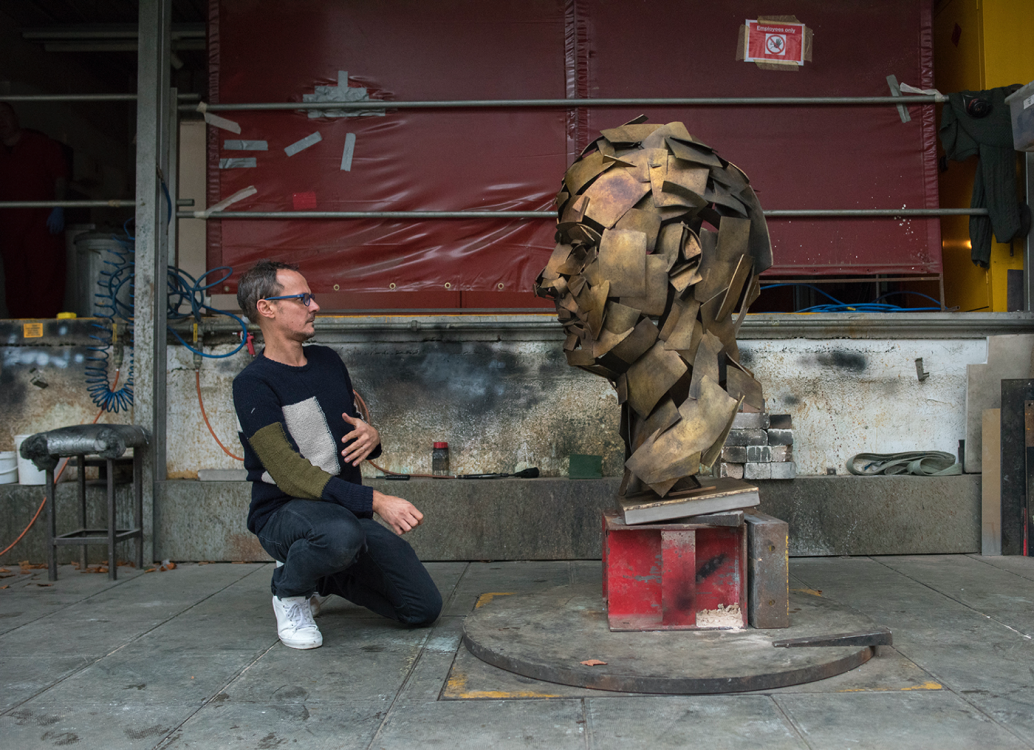
Speaking about why he is drawn to technology, Yeo explains, “There’s an incredible feeling of liberation when you realize you’re able to do things which aren’t possible in the real world, when the rules of traditional art media, or even the laws of physics, no longer apply. I started exploring 3D, digital and virtual tools for making art about 5 years ago and had no idea where any of it would lead. It wasn’t clear at that point if there would ever be an opportunity, let alone a platform, to show the work at all, which is why it’s so exciting that this is happening now and I’m fascinated to see what new genres evolve as it progresses”.
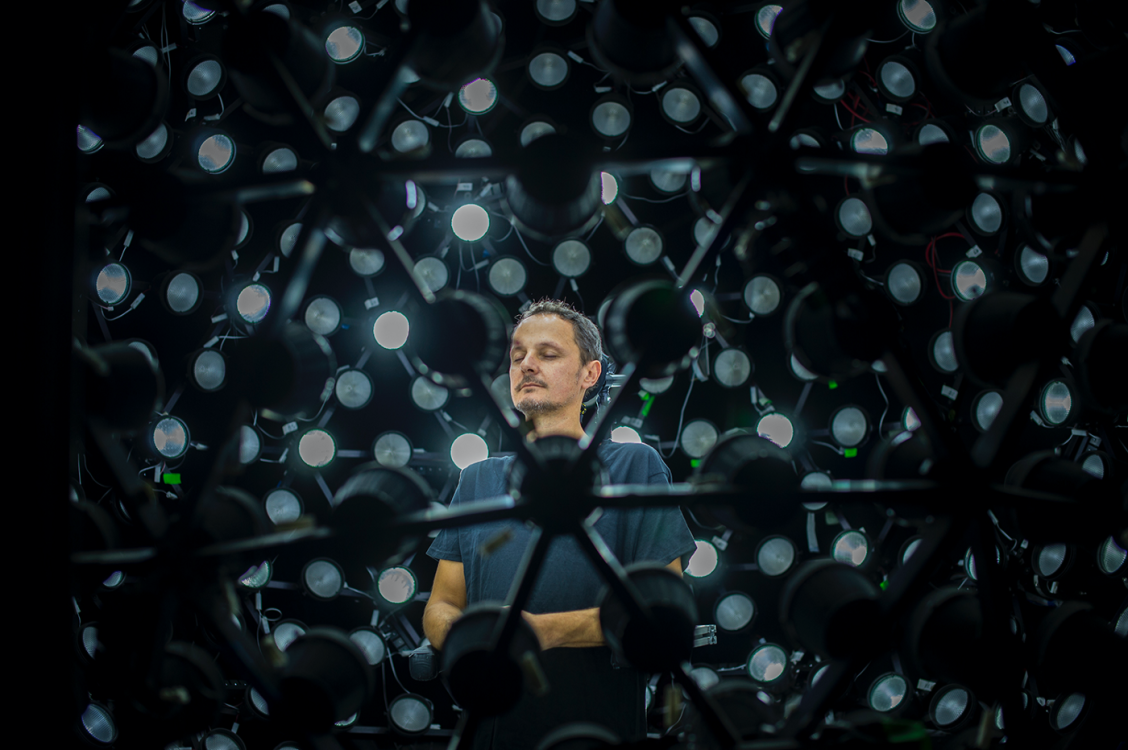
The power of 3D in self-portrait particularly intrigued Yeo who says, “Our own image is something we’ve never seen in 3D. We see ourselves in the mirror from a restrictive set of angles. Photographs and videos merely provide distorted images. We can’t see what we look like from someone else’s point of view”. The artist had a 3D scan of his body made using a light stage scanner, the technology used for Hollywood special effects. With the scan, Yeo can see himself in a new light and walk around himself as if looking at another person, a strange and completely new experience.

Self Portrait³: Real and Virtual
The NFT work toys with the dichotomous relationship between real and virtual as well as 2-dimensional and 3-dimensional. While the work is virtual, much of it is based on reality. The studio space is derived from a 3D model of the artist’s physical workspace. Similarly, the self-portrait shown on the canvas is based on 3D scans of the artist.

The portrait painting within the work is purely imaginary and doesn’t exist in the real world, instead it was conjured up by a careful manipulation of digital files. However, the lines between real and virtual are blurred further by the fact the paint strokes used for this virtual portrait are themselves based on physical paintings.
“In the course of playing around with 3D scanning, I realized it would be interesting to see a 3D picture made from paint rather than photographic material and secondly to see it emerge as it is being made,” explains Jonathan Yeo.
Having first tried using digital painting tools, Yeo turned to physical painting, “There is an extreme level of detail and subtlety to painting and pigments which is very hard to replicate in other ways. There is a reason why painting continues to persist. But of course, there are things you can’t do. The fun for me is in combining elements of the analog and the digital.”

The process of turning 2D brushstrokes into 3D dimensions was an elaborate one. The artist first had to unwrap the textures around the 3D scan of his head in order to base his painting on it. Next, he painted brushstrokes on paper and photographed them individually before animating them against a greenscreen. Finally, Yeo brought the animated painting into the Unity game engine and projected it onto the 3D mesh. By placing both inside a photoreal model of his studio, and creating a moving camera viewpoint, it gives the impression of watching the painting process unfold in real life.
Existing across digital spaces
As an NFT, the work is firmly rooted within the digital space and Jonathan Yeo took advantage of the multiple digital spaces available to him to tell the story of his work in different ways.
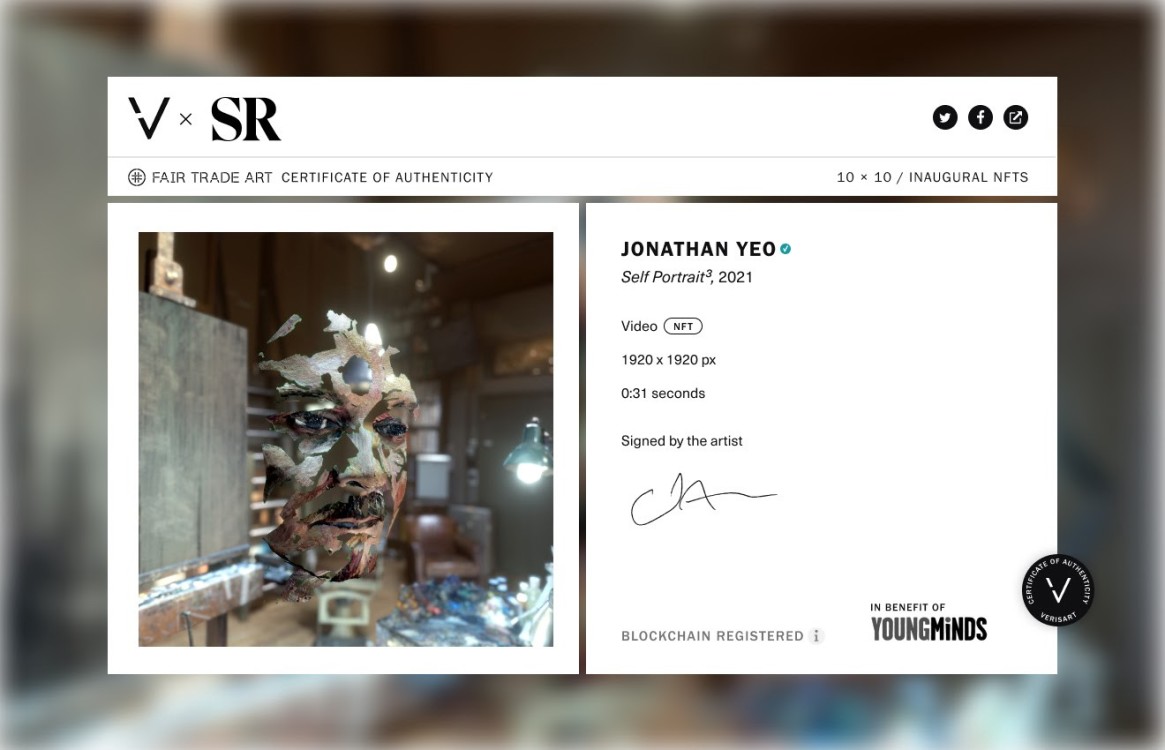
Jonathan Yeo’s NFT is certified with a Fair Trade Art Certificate from Verisart, an award-winning blockchain certification platform. Fair Trade Art is an initiative by Verisart designed to bring together artists and social impact organizations to do good. The certificate signals that funds from the sale of the artwork are benefiting a charitable cause. In this case, the artist will be donating 25% of his proceeds to Young Minds, a UK charity working to ensure young people get the mental health support they need.
For collectors, Verisart’s patent-pending Certificates of Authenticity (COA) form an integral part of collecting NFTs. They provide confidence in the identity of the artist and the verified history of the artwork. Designed to empower artists to tell the story of their work, the digital certificates include additional images, videos and documents. Yeo’s certificate includes an exclusive collector reward. The owner of the work and certificate of the work will gain exclusive access to unique images from the making process.
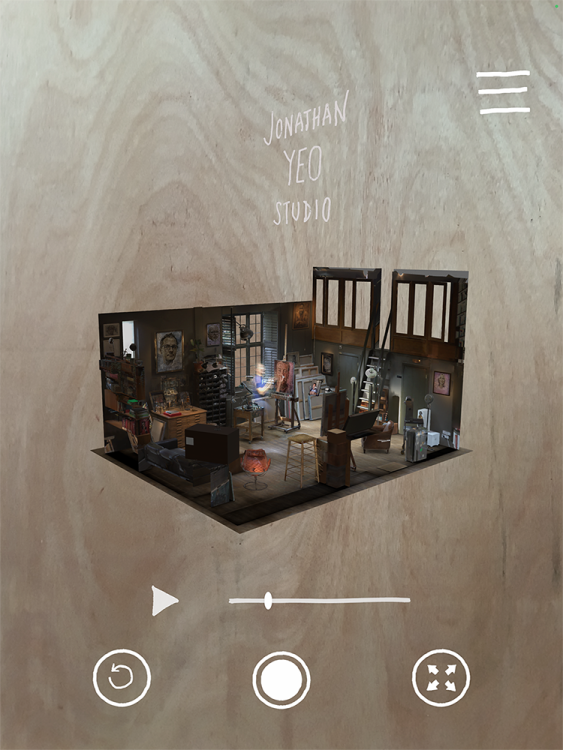
The artist also hopes to make the 3D design of Self Portrait³ available on his app Jonathan Yeo Studio (available on iOS and Android). The app was built by Yeo himself — with his small studio team — using game technology, Unity, so more content could be added. Visitors are invited into his studio to explore it for themselves. It is not just virtual reality, it is fully immersive and viewers are welcomed to experience the artwork in a completely different environment. By including the work in the app, Yeo wants to allow viewers to experience the work in augmented reality and to physically walk around it, making its 3D elements all the more prominent.
About the Artist
Jonathan Yeo (b. London 1970) is one of the world’s leading portraitists and has exhibited widely in both the UK and abroad. His sitters include such diverse figures as Sir David Attenborough, Malala Yousafzai, Damien Hirst, Grayson Perry, Idris Elba, Nicole Kidman, Baroness Lawrence, Tony Blair and The Duke of Edinburgh. Known for both traditional and experimental portraiture, his work has been the subject of mid-career surveys at the Museum of National History in Denmark (2016), the Laing Art Gallery in Newcastle (2014–15), the Lowry in Greater Manchester (2014) and the National Portrait Gallery in London (2013). In 2018, Yeo exhibited a series of works at the Royal Academy of Arts in London all derived from new technologies, including the first bronze sculpture to be made using an innovative combination of processes, including 3D scanning, virtual reality and 3D printing. Other recent projects include collaborations with the Smithsonian National Portrait Gallery in Washington DC and The Bowes Museum in County Durham. In 2018 Yeo was appointed as Trustee of the National Portrait Gallery in London, and named Artist of the Year by GQ Magazine.
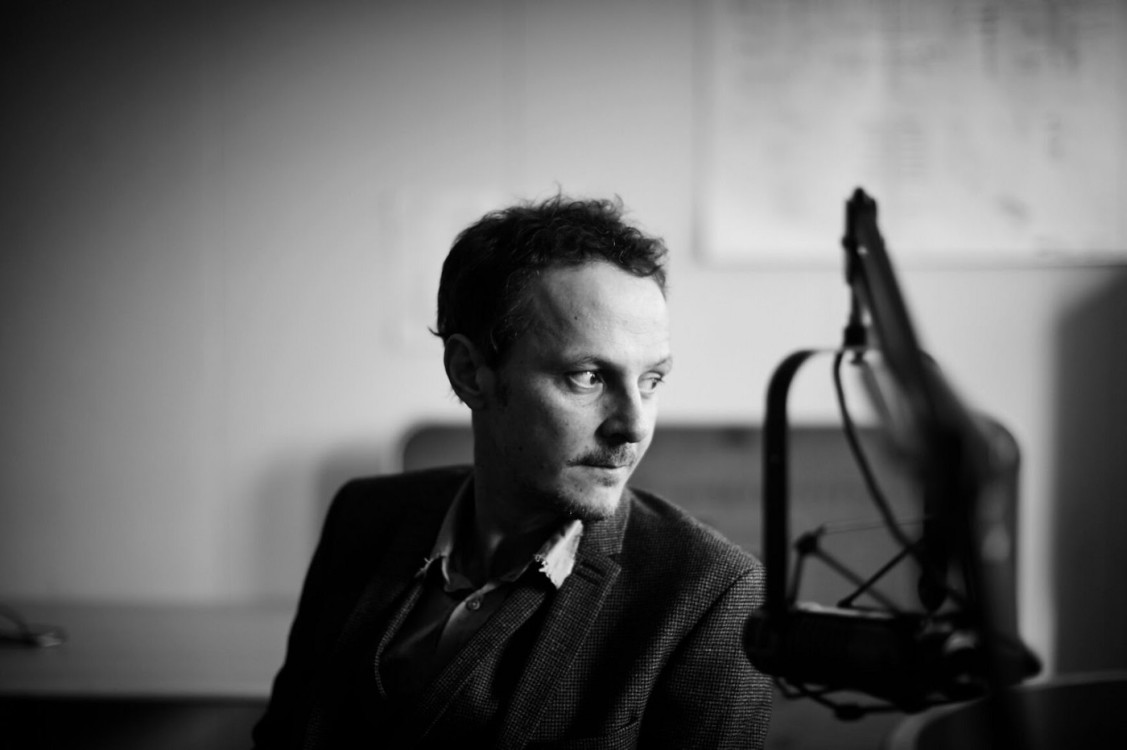
Bidding for Jonathan Yeo’s inaugural NFT, Self Portrait³, closes at 1pm EDT on April 8.
Join Jonathan Yeo on ART TALKS WITH VERISART to hear him discuss life, art and tech with Robert Norton, CEO and co-founder of Verisart. Tuesday, April 6 at 3pm EDT/8pm BST on Clubhouse.